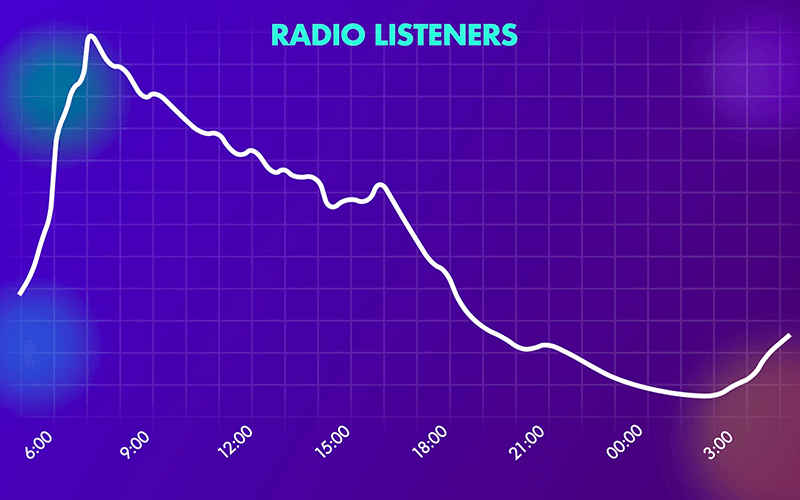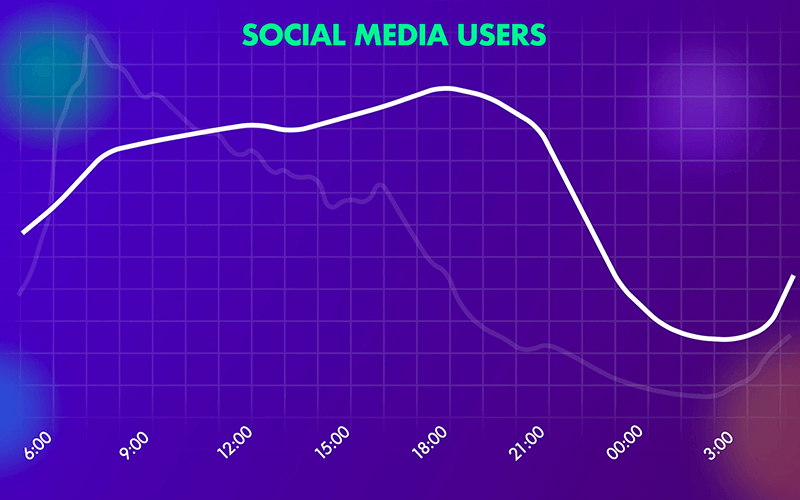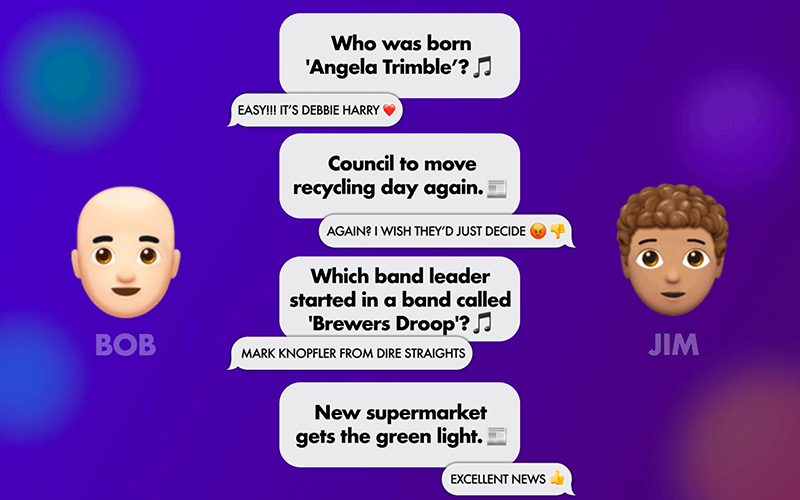How You Can Exploit The Social Media Algorithm


This is all about the differences and similarities between your social media audience and your on-air audience and how understanding the differences can be exploited.
Now I guess you may have already posted something and notice that sometimes your best posts get no interaction and mysteriously the not so good ones get loads of likes, shares and comments - I’ll explain why that is.
To do that we’ll take a little journey into how the social media algorithms work. Of course, the likes of Facebook, Twitter and others, keep this a closely guarded secret. But from what has been published and observed we can have a good stab at uncovering what is happening.

You’ve probably seen a graph like this. t’s the typical profile, hour by hour, of the proportion of people listening through the day to a typical radio station. We all know that it’s the breakfast show which has the most listeners. As the day progresses the audience reduces through the morning into the afternoon until the evening when there is a sharper decline. Then during the small hours, it’s insomniacs and nightshift workers who are the only one’s listening to the station.

The typical social media audience has some similarities. Here’s an hourly breakdown of when people are on social media.You can see how the number of people increases throughout the day until 6 or 7 in the evening. Then this tails off. And later, of course overnight, most people are asleep.
But this graph only tells us part of the story, because social media isn’t like broadcasting – people don’t see your posts at the moment you put them online or indeed in the order you publish them. So, for the next bit let’s look at what the social media algorithms are doing. Don’t worry I’m going to keep this a simple so I can illustrate the points.

Here are Bob and Jim who are already followers of our radio station’s social media Page. Bob loves his pop trivia. While Jim wants to keep up to date with the local news.
On Monday we post a Pop Trivia question onto the radio station’s Page. “Who was born 'Angela Trimble’? Bob knows this and posts his answer which is Debbie Harry from Blondie. Jim on the other hand thinks Pop Trivia is tittle-tattle. But the news that the local recycling day is moving again has really got him upset. He isn’t afraid of writing his opinion and giving it a big thumbs down.
It’s Tuesday – the next day - and our radio station post another brilliant pop music trivia question “Which band leader started in a group called 'Brewers Droop'. Bob is straight in with Mark Knopfler – who went on to form Dire Straits.
Meanwhile, Jim feels much better seeing another of our news posts about how the Local Authority have decided to allow planning for a new supermarket; Comment made, and Bob gives this a big thumbs up this time.
As this continues each day the social media platform learns the types of content Bob and Jim will engage with most. For Bob its pop music and Jim its local news. So, what keeps happening? Bob sees more music-related content and Jim more local news. In fact, because Bob never engages with our local news stories, he may not even see those posts at all, and likewise the pop trivia is hidden away from Jim.
This means our following is segmented for us – if you like made up of small groups - by the social media platform, which is handy for targeting specific groups but not so good for reaching every one of our followers.
However, in reality, the social media algorithm is continually scoring each of our posts to see if more people would react to it, and this I really important aspect.
Let me explain by going back to the post about the planning permission for the new supermarket. Initially, this post is shown to a section of our followers – including Jim - who are most likely to engage with local news stories. However, the more likes, shared comments this post gets amongst this core group of people, the more the algorithm will show to others beyond this group. Then once again, if they share, like, comment or watch the video for long enough, then the post gets shown to even more of your followers and so on. This is how posts reach more of our follower.
Competition for space on the social media feed is intense – it’s not like Facebook and Twitter are short of content. So maybe you can see how important it is for each post to gain traction early on in this cycle, otherwise, it will get swamped out by other posts.
From these examples I think you can see that how your posts on social media are received are quite different from how you engage your listeners on-air.
Yes, it’s really important your post’s get initial likes, shares and comments which then continue. But, it’s not vital you post at peak times to reach the biggest audience, like you need to do on air.
So, we can create a better picture than the hourly graph I showed you earlier of when your followers are online - I’m sure it was one you’d have been comfortable with - Instead, your audience is made up of lots of microchannels of people, all of them unique and with a wide variety interest’s.
Now you know this how, the question is how can I exploit it?

Social media can give you and your presenters really quick and accurate insights into your audience demographics, location, likes and interests. It’s not the same as a RAJAR, Neilsen, Radio Pulse or any other independent radio listener survey. But when you dig into the stats you’ll see that they are extremely valuable.
Later, I’ll show you how to monetise your social media without actually spending ANY time doing it. But for now, it’s enough to say, by using a service like Live Drive a lot of the work is done for you.
Subscribe to our newsletter to be notified of new videos in this training series.
Not every one of your followers sees all of your posts – mostly it will be a just small proportion of them.
As a publisher - or as I like to call you an influencer - it’s good to publish content on different subjects.
The success of any post still depends on people liking, commenting, sharing as well as watching the video.
Posts can quickly die out if they don’t get enough engagement in the early stage with the group of people the algorithm expects that should be engaged.
competition for space is intense so you’ll need a steady stream of relevant and engaging content to get traction across your followers.
I appreciate this has been a simplification. We’ve not talked about reaching people who are not already your followers. But, now have the essence of how every social media platform goes about putting content in front of us.